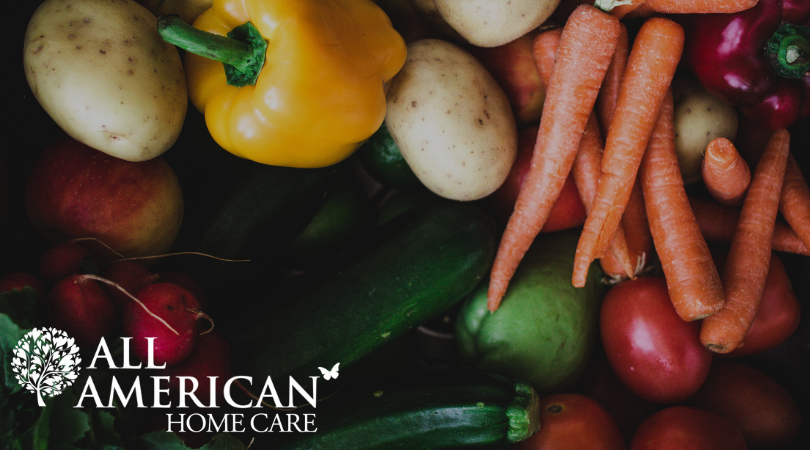
Nutrition for Heart Health
February 08 2022
Eating a Heart Healthy Diet and What that Looks Like
Maintaining a healthy lifestyle is important for anyone, however, it is particularly important for those living with heart disease. Many changes need to be made to help improve heart health and stave off further complications. Part of those changes are eating a heart healthy diet.
By following a heart healthy diet, you can help reduce or even eliminate some risk factors like reducing total and LDL-cholesterol; lowering blood pressure, blood sugars and triglycerides; and reducing body weight.
While many plans focus on what you shouldn’t eat (often your favorite foods), the best nutritional strategies actually focus on what you can and should eat. Research has shown that adding certain foods to your diet is just as important as cutting back on other foods.
Decrease Saturated and Trans Fats
Before we get into what you should be eating, let’s take a look at one thing you definitely need to eat less of: saturated and trans fats. The American Heart Association (AHA) encourages people to eat a healthy diet and to decrease saturated fats and trans fats in their diet. Instead, choose monounsaturated and polyunsaturated fats (olive and canola oils, nuts, seeds, avocados, olives, flaxseed, soy, and fatty fish).
Increase Fruits and Veggies
Adding fresh fruits and veggies helps your body get the nutrients it needs and helps you stay away from processed, fatty, and sugary foods. Plus, they taste great! Aim for seven to nine servings of fruits and veggies a day to get the antioxidants, b-vitamins, dietary fiber and other nutrients that help prevent disease.
Here are some examples of one serving of fruit:
- 1 medium sized piece of fresh fruit
- ½ medium banana
- ½ grapefruit
- ½ cup canned fruit (choose no sugar added)
- ½ to ¾ cup of most fruit juices (choose lower sugar options)
Here is what one serving of vegetables looks like:
- ½ cup cooked veggies
- 1 cup raw or leafy veggies
Follow the “rainbow rule” by eating a variety of colors of fruit and veggies to ensure a diverse intake of nutrients. Remember ROYGBIV from art class? Keep it in mind and try out some of these colorful selections of fruits and veggies:
- Red: strawberries, raspberries, peppers, tomatoes
- Orange: carrots, oranges
- Yellow: peppers, bananas, peaches
- Green: kiwi, celery, lettuce (the darker the green the more nutrient dense, so choose spinach over iceberg)
- Blue: blueberries
- Purple: plums, eggplant
Increase Your Fiber Intake
Fiber is a type of carbohydrate that the body cannot digest. It is found in whole grains, fruits, veggies and beans. A diet rich in fiber can help reduce cholesterol, control blood sugar, prevent gastrointestinal disease, help with weight management, and promote regularity.
Fiber comes in two forms and each has a different effect on health.
- Soluble (Viscous) Fiber: provides the greatest heart-health benefits as it helps to lower total and LDL-cholesterol. Sources include oats, oat bran, barley, legumes (dried beans, lentils and split peas), psyllium, flaxseed, apples, pears and citrus fruits.
- Insoluble Fiber: often referred to as “roughage.” It promotes regularity, adds bulk and softness to stools, helps with weight regulation, and helps prevent many gastrointestinal disorders. Good sources include wheat bran, whole wheat and other whole grain cereals and breads, nuts, and veggies.
Aim for a healthy mix of both types of fiber with a total intake of 25 or more grams a day.
Swap Animal Protein for Plant Protein
Reduce your intake of animal protein (beef, pork, chicken with skin, and whole fat dairy). These meats, especially red meat (beef) and whole fat dairy, can contribute to weight gain and increased risk of heart disease. Here are some good ideas to help you increase healthy meats and swap out for plant protein.
- Eat two to three veggie meals weekly. Try split pea soup, garbanzo bean salad, veggie burgers or tofu stir-fry.
- Eat no more than one red meat meal per week and choose the leanest cut with skin and fat removed.
- Eat two skinless poultry meals each week.
- Eat a minimum of 6 ounces (2 servings) of omega-3 fatty fish weekly (cold water fish such as salmon, tuna, trout, sardines and herring). Plant based sources of omega-3 include chia seeds and flax (whole or ground, flaxseed oil). Foods with flax in them include: breads; crackers; energy bars; muffin, bread, pancake and waffles mixes; frozen waffles and omega-3 enriched eggs.
Portion Control
Eating too much of a good thing can be bad, so practice good portion control. Make sure you know what one serving is. Here are some examples:
- 1 cup cooked pasta or rice (reference size: tennis ball)
- 1 slice of bread (reference size: CD case)
- ½ cup cooked veggies or fruit (reference size: baseball)
- 1 ounce low fat cheese (reference size: pair of dice)
- 1 teaspoon olive oil (reference size: half dollar)
- 3 ounces cooked meat (reference size: deck of cards)
- 3 ounces tofu (reference size: deck of cards)
Other Healthy Diet Tips
Here are a few other diet related tips:
- Don’t skip meals; try eating four to six smaller meals a day instead.
- Moderate your alcohol intake (one drink per day for women, two for men) or eliminate it for certain conditions or medications.
- Choose low fat or non-fat dairy options; the AHA suggests two to three servings per day (skim milk, 1% milk, nonfat yogurt or cottage cheese, reduced fat cheeses).
- Indulge in moderation (but stay away from lots of sodium).
- Exercise daily; be sure to work with your care team to choose the right exercise regimen before getting started.





